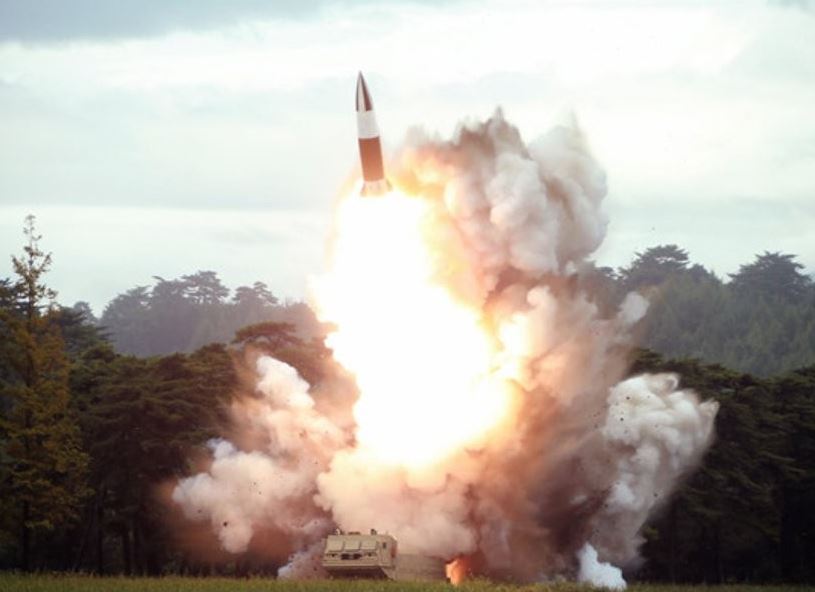November 1, 2019
Pyongyang is unhappy at the pace of negotiations with Seoul and Washington.
North Korea fired two short-range projectiles from a western region toward the East Sea on Thursday, South Korea’s Joint Chiefs of Staff said, amid a lack of progress in denuclearization talks with the United States and chilled inter-Korean ties.
The projectiles were fired at 4:35 p.m. and 4:38 p.m. from areas in the city of Sunchon, South Pyongan Province, toward the East Sea, the Joint Chiefs of Staff said.
 |
Both flew around 370 km across the peninsula, reaching a maximum altitude of around 90 km, the JCS said, adding that South Korean and US intelligence authorities are analyzing their exact type.
“Our military is monitoring the situation in case of additional launches and maintaining a readiness posture,” the JCS said, calling on the North to “immediately stop such an act that does not help efforts to ease tensions on the Korean Peninsula.
South Korea’s National Security Council held an emergency meeting, presided over by Chung Eui-yong, chief of the presidential national security office, to analyze the intention behind the launch, and reviewed the overall security conditions on the Korean Peninsula, Cheong Wa Dae said, adding that the council expressed “strong concern.”
It is the 12th time that North Korea has carried out such a weapons test so far this year, with the last test-firing taking place on Oct. 2, when it tested a new type of submarine-launched ballistic missile, the Pukguksong-3, from waters off its east coast.
During the previous 10 rounds of tests, the North test-fired short-range projectiles, including its version of Russia’s Iskander ballistic missile and a “super-large” multiple rocket launcher system.
Experts said that the launches could have involved North Korea’s newly developed multiple rocket launcher system.
Following its Sept. 10 tests of what it claimed as a “super-large” multiple rocket launcher from its western city of Kaechon, South Pyongan Province, eastward, Pyongyang hinted at additional test firings by saying, “What remains to be done is running fire test which is most vivid character in terms of the power of multiple rocket launcher.”
During the test, two projectiles flew around 330 km across the peninsula at a maximum altitude of around 50 to 60 km, according to the JCS. One landed in the East Sea, and the other is presumed to have fallen on land, which suggests that the launches could have been unsuccessful.
The latest firing came a day after North Korean leader Kim Jong-un sent a condolence message over the death of President Moon Jae-in’s mother, a surprise move that had briefly raised hope for the possibility of Pyongyang softening its stance on Seoul.
Inter-Korean ties have been at an impasse amid no progress in denuclearization negotiations.
Last week, North Korea demanded that Seoul remove all of its long-abandoned facilities at the Mount Kumgang resort in its territory. It then turned down Seoul’s proposal to hold a working-level meeting to talk about the fate of the long-suspended tourism project.
Thursday’s test also came as the North has stepped up pressure on the US to meet the year-end deadline that it has set for Washington to come up with a new proposal on how to exchange denuclearization measures and sanctions relief.
Earlier this month, the two sides held the first nuclear talks since February’s no-deal summit between US President Donald Trump and North Korean leader Kim Jong-un, but the meeting in Sweden ended without an agreement, with the North accusing the US of failing to put forward a new proposal.
Under UN Security Council resolutions, the North is banned from test-firing ballistic missiles. But US President Donald Trump has downplayed those tests, stressing that Pyongyang has not tested long-range missiles or nuclear devices.


